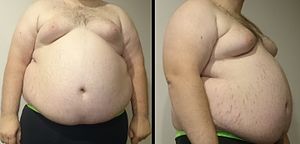7 Ways We’ve Failed Miserably at Trying to Outsmart Nature
Vin Miller, October 21st, 2009 With our high level of intelligence and the vast amount of technological innovation that we enjoy today, it’s ironic that excellent health is so elusive to so many people. Without any of the modern technology that we rely on today, our primitive ancestors were able to enjoy exceptional health and rarely encountered the many chronic and debilitating conditions that are so common today. These people had an intimate knowledge of nature and a tremendous appreciation for it which is something that we’ve lost without reliance on technology.
With our high level of intelligence and the vast amount of technological innovation that we enjoy today, it’s ironic that excellent health is so elusive to so many people. Without any of the modern technology that we rely on today, our primitive ancestors were able to enjoy exceptional health and rarely encountered the many chronic and debilitating conditions that are so common today. These people had an intimate knowledge of nature and a tremendous appreciation for it which is something that we’ve lost without reliance on technology.While our primitive ancestors were forced to live in agreement with nature, we seem to do everything we can to outsmart it, and we almost always fail. The following are some of the more notable and devastating mistakes that we’re still making.
1. We’ve Lost Our Inherent Ability to Choose Healthy Food
Even the planet’s most simplistic and unintelligent creatures are able to select appropriate foods to support their health. Despite being the most intelligent form of life on earth, many of us have lost this inherent ability and are literally killing ourselves with our food choices. Perhaps we’re too smart for our own good.
Healthy eating really doesn’t have to be complicated. Simply choose the whole foods provided to us by nature. Sure, there’s more to a healthy diet than simply eating whole foods, but this principle alone is in my opinion more important than any other and will resolve many of the diet related health issues that are so prevalent today.
















